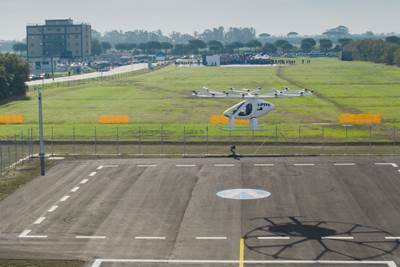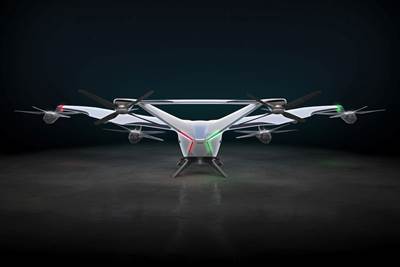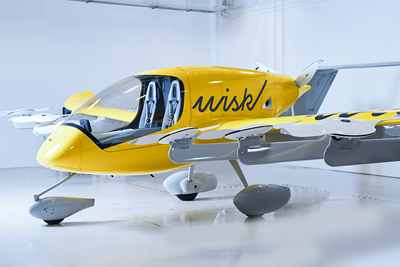NASA's Advanced Air Mobility National Campaign adds new partners
Partners like Overair and Supernal boast composites exploration, expertise in eVTOL developments, joining 30 others taking part in the program’s integrated AAM information exchange efforts.
Advanced air mobility (AAM), with its many vehicle concepts and potential uses in both local and intra-regional applications, is shown in this illustration. Photo Credit: NASA
NASA’s Advanced Air Mobility (AAM) National Campaign has signed agreements with four new organizations to exchange information related to the development and testing of vehicles, systems and technology to integrate air taxis, cargo delivery and other advanced aircraft concepts into the National Airspace System (NAS).
The following industry partners have signed Space Act Agreements with NASA for the next phase of the National Campaign:
- Electra Aero (Manassas, Va., U.S.);
- Overair (Santa Ana, Calif., U.S.) — its Butterfly electric vertical takeoff and landing (eVTOL) prototype is integrating a composites-intensive design, using carbon fiber/epoxy prepreg.
- Supernal (Washington, D.C., U.S.) — the company’s unveiled eVTOL vehicle cabin concept included a CFRTP material incorporation and a biomimetic design.
- Ellis & Associates, a consulting arm of Lacuna Technologies (Palo Alto, Calif., U.S.).
The new partners join more than 30 other vehicle developers (including Joby Aviation and Wisk) infrastructure providers and airspace managers participating in the National Campaign on an ongoing basis. Partners are drawn from across industry, government and academia. Housed in NASA’s Aeronautics Research Mission Directorate (ARMD), the National Campaign has worked with these partners over the past few years to establish a flight test infrastructure, explore future flight path designs and help move technologies such as eVTOL vehicles toward certification and use.
“The National Campaign team is making strides in understanding how the vehicles, infrastructure and airspace will operate in urban, suburban, rural and intra-regional environments, and we are excited to welcome these new partners to the research ecosystem,” Al Capps, AAM National Campaign project acting lead, says. “Each additional research partner and operational flight demonstration helps inform approaches by our partners at the FAA [Federal Aviation Administration] and the future concept of operations.”
The National Campaign plans to produce data that will assist the FAA in defining regulatory compliance, and prepare both vehicles and airspace for effective and safe commercial operations.
The National Campaign’s ongoing first phase, NC-1, is a series of testing focused on operational safety that integrates efforts in several areas essential to the future of AAM: eVTOL vehicles, automation, airspace, acoustics modeling, concepts of operations, contingencies at all phases of flight and mobile landing surfaces.
The new agreements were made under the National Campaign – 2 Information Exchange Annex, which offered AAM entities an opportunity to begin information exchange with NASA for early preparation for the next phase of National Campaign flight activities, NC-2, planned to occur when NC-1 concludes. NC-2, which is focused on demonstrating integrated automation capabilities and architectures supporting safe and scalable AAM operations, will consist of integrated scenarios through flight test demonstrations and simulations, as well as systems and operations analysis at test sites around the country.
The partners will participate in NC-2 by sharing information about their vehicles, processes, traffic management systems, infrastructure and capabilities, giving NASA early insights into each partner’s capability maturity level and facilitating design, build and test reviews.
By lending NASA’s decades of expertise in aeronautical research and development as well as integrating efforts across the AAM ecosystem, the National Campaign plans to produce data that will assist the FAA in defining regulatory compliance, prepare both vehicles and airspace for effective and safe commercial operations, and ensure U.S. leadership in this growing industry.
Related Content
Composite sidewall cover expands options for fire-safe rail components
R&D project by CG Rail explores use of carbon fiber-reinforced thermoplastics and recycled manufacturing scrap to meet fire safety, weight and volume targets.
Read MoreParis Air Show 2023 highlights
The Paris Air Show, one of the largest aerospace trade shows in the world, returned for the first time since 2019 and proved that the global aviation industry industry is very much alive and kicking.
Read MoreInfinite Composites: Type V tanks for space, hydrogen, automotive and more
After a decade of proving its linerless, weight-saving composite tanks with NASA and more than 30 aerospace companies, this CryoSphere pioneer is scaling for growth in commercial space and sustainable transportation on Earth.
Read MoreHexagon Purus opens new U.S. facility to manufacture composite hydrogen tanks
CW attends the opening of Westminster, Maryland, site and shares the company’s history, vision and leading role in H2 storage systems.
Read MoreRead Next
Volocopter conducts first crewed flight, deploys vertiport in Italy
In addition to crewed flights in France and South Korea, the company has successfully flown the Volocopter 2X, presented Italy’s first testing vertiport and explored the VoloIQ digital platform.
Read MoreAirbus, Hiratagakuen partner to develop AAM services in Japan
Agreement will tackle future eVTOL flight routes, concepts of operations and equipment for safe flights, all of which is crucial to launch commercial services with the composite CityAirbus NextGen.
Read MoreWisk Aero brings AAM to Australia through partnership with Queensland Local Government
Wisk expands global presence with the addition of Australia-based personnel, works to support the rollout of accessible, autonomous and sustainable flight in the region.
Read More

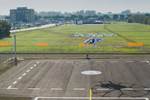
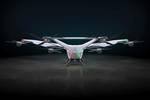

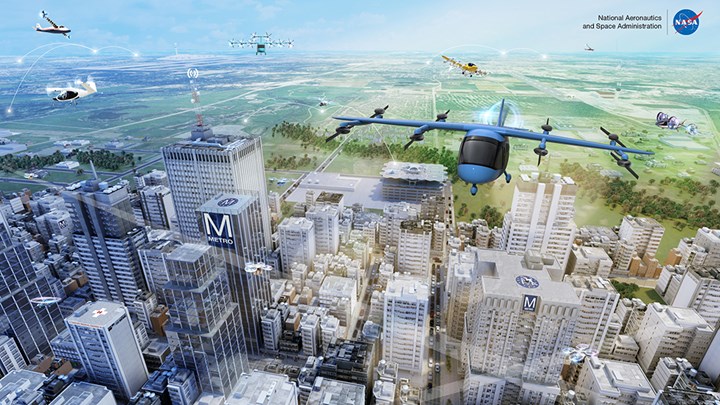







.jpg;maxWidth=300;quality=90)








